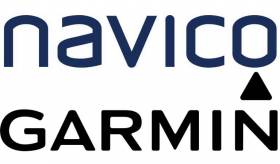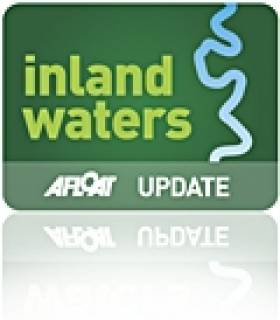Displaying items by tag: Garmin
Garmin Launch ECHOMAP Ultra 2 Chartplotter Series for Anglers
Garmin, a leading technology company, has launched its ECHOMAP™ Ultra 2 chartplotter series designed with advanced features for inland and nearshore anglers.
Offering a 10- or 12-inch sunlight-readable touchscreen with keyed assist, they put UHD scanning sonar, support for Garmin Navionics+™ and Garmin Navionics Vision+ mapping with an included 1-year subscription for daily updates, wireless networking capabilities and more at an angler’s fingertips.
Expected to be available next month, the ECHOMAP Ultra 2 chartplotters include a quick-release mount for fast and easy mobility, and they are sold with or without a GT56UHD-TM transducer
Garmin Named 2023 Manufacturer of the Year by US National Marine Electronics Association
Marine electronics manufacturer Garmin has been named Manufacturer of the Year in the large manufacturer category for the ninth consecutive year by members of the National Marine Electronics Association (NMEA) in the United States.
The awards were announced at the NMEA’s annual conference and awards banquet held on Thursday 21 September in Orlando, Florida.
The coveted Manufacturer of the Year title is awarded to the most recognised company in the marine electronics industry for excellence in product service and support in the field.
Garmin was also awarded five Product of Excellence awards in the multi-function display (MFD), autopilot, multimedia entertainment, automatic identification system (AIS) and safety categories, for its GPSMAP 8416xsv, Reactor 40 hydraulic autopilot with SmartPump v2, Fusion Apollo RA770 marine stereo, Cortex M1 Hub and flagship handheld GPSMAP 86i, respectively.
These awards are voted on by NMEA dealers who specialise in installing marine electronics, qualified NMEA technicians and other marine electronics manufacturers.
“These awards demonstrate Garmin’s strength as a team, as they exemplify not only the high quality of our products but also our commitment to providing customers and dealers with exceptional service and support throughout our entire organisation,” said Dan Bartel, Garmin vice president of global consumer sales.
“We are extremely honoured to again be named the NMEA Manufacturer of the Year and very proud to be a part of this organisation in its mission to enhance the technology and safety of electronics in the marine industry.”
Garmin Unveils New GPSMAP 9000 Series Chartplotters in 4K
Marine electronics manufacturer Garmin has unveiled its flagship GPSMAP 9000 series of all-in-one chartplotters boasting 4K resolution for maximum detail.
Available with 19”, 22”, 24” or 27” touchscreen displays, the new series is powered by a processor that’s seven times faster than previous generations.
For superior clarity and sunlight readability, the in-plane switching (IPS) touchscreen displays provide consistent, accurate colours that can be seen from all viewing angles, even with polarised sunglasses.
And for the first time, anglers can see fish and sonar targets in stunning 4K high definition, too, by adding a Garmin GSD sonar module, Panoptix transducer or LiveScope sonar.

“For decades, mariners have been relying on Garmin’s GPSMAPs to help them navigate waters all over the world,” says Garmin’s Dan Bartel.
“Building on that success, we’re thrilled to unveil the 9000 series with bigger, best-in-class displays, lightning-fast processing speeds and the ultimate connected boating experience on the new Garmin BlueNet network.”
Another key feature is the ability to integrate with onboard computer systems for engine monitoring, camera-assisted docking, entertainment and even helm control.
Expected to be available next month, the GPSMAP 9000 series starts at €10,499.99. To learn more, visit garmin.com/marine.
Navionics Marine Charts Expand Relief Shading Coverage
Garmin, the world’s most innovative and recognised marine electronics manufacturer, today announced expanded and enhanced high-resolution relief shading coverage to Navionics® Platinum+™ premium marine charts for compatible chartplotters. The update from Navionics provides 120% more relief shading coverage for many new coastal and inland waters than previous charts. Combining colour and shadow, relief shading gives boaters, anglers and divers an easy-to-interpret, clearer view of what’s below the surface than contour lines alone—and is now available on more than 40,000 additional lakes.
“Our team is continuously working to update our robust relief shading to provide combined inland and coastal content for our Navionics Platinum+ charts, enhancing mariners’ experience so they can focus on exploring the waters they enjoy most. Additionally, mariners can continue to utilise the same quality content and premium features, such as high-resolution relief shading chart overlays, to support an enhanced navigation experience—whether on the lake or off the coast.” —Dan Bartel, Garmin Vice President of Global Consumer Sales
Platinum+ provides boaters, anglers and divers access to an exclusive relief shading overlay with availability in lakes and rivers in the U.S., Canada, Europe, Africa, Australia and New Zealand1. Platinum+ offers a variety of features — such as daily chart updates, chart overlays and advanced routing technology — that are designed to smoothly guide boaters on the water, or quickly lead anglers to where the fish may be hiding. The expanded relief shading, which was recently made available in the Navionics Boating smart device app, reveals the shape of a lake, river and ocean seabeds in a vibrant new colour palette that provides a better understanding of depth changes at a glance and makes it easier to identify sharp ledges, points or other changes in bottom structure.
A one-year subscription is included with the purchase of a Navionics Platinum+ chart card, offering a quick and easy way to access unlimited daily chart updates via the Navionics Chart Installer, or using the Plotter Sync feature in the Boating app. Charts also feature up to 1-foot depth contours, community edits, depth shading and shallow water shading options for insight into inland and coastal waters.
An even clearer picture
Platinum+ premium charts’ new colour palette and image quality deliver a clear image of bottom detail that uncovers promising fishing spots, navigation channels and more. Multiple shading options aid in shallow water navigation, making it easier to choose depth ranges when searching for the best fishing spots. Additionally, numerous wrecks were targeted for enhancement to assist anglers and divers identify more precise spot-on-the-spot locations.
Daily map updates
With up to 5,000 updates to map content every day, Platinum+ mapping offers fresh insights about covered bodies of water for enhanced situational awareness and peace of mind while navigating. The mapping is revised daily from public and private sources, which include proprietary surveys and Notice to Mariners to give mariners the most up-to-date information available from Navionics. With mapping coverage of coastal and inland waters worldwide, daily updates allow for immediate access to new content and chart data as it is updated. Once the year-long subscription is activated, customers can access unlimited daily map updates using the Navionics chart installer.
Platinum+ premium charts are available now starting at £239.99. The maps come on a microSD/SD card for simplified installation compatible with third-party chartplotters.
Marine Electronics Manufacturers End Three-Year-Long Legal Dispute
Navico, parent company to the Lowrance®, Simrad® and B&G® brands and Garmin International Inc., a unit of Garmin Ltd. (NASDAQ: GRMN), announced today that they have ended a three-year-long legal dispute relating to sonar and auto guidance patents. The agreement includes a broad cross licensing of patents and other intellectual property, which will allow both companies to bring new innovations to the market faster and benefit all marine customers.
“Research and development of game-changing technologies like our DownScan Imaging is the lifeblood of our business and the marine electronics industry,” said Leif Ottosson, CEO, Navico. “We are very pleased with this resolution, which includes guidelines for the future cross licensing of technologies for the benefit of both of our customers.”
”This is an exciting time as new technology is bringing positive change to the marine market,” said Cliff Pemble, President and CEO, Garmin. “This resolution allows us to focus all of our energy to bring even more innovation to our marine customers.”
New GPS Product for Shannon Navigation
The Inland Waterways Ireland download is the first boating product developed for the Shannon Navigation compatible with all Garmin mapping compatible recreational and marine devices.
It allows the user to search for points of interest (POIs) as well as build routes automatically or manually on the Shannon Navigation network.
POIs include marinas, geographic named places, lakes and much more. The Inland Waterways Ireland product also features locks, jetties, fishing locations as well as lake and river shorelines.
If you fancy getting this download to explore this beautiful part of Ireland yourself go HERE.






























































